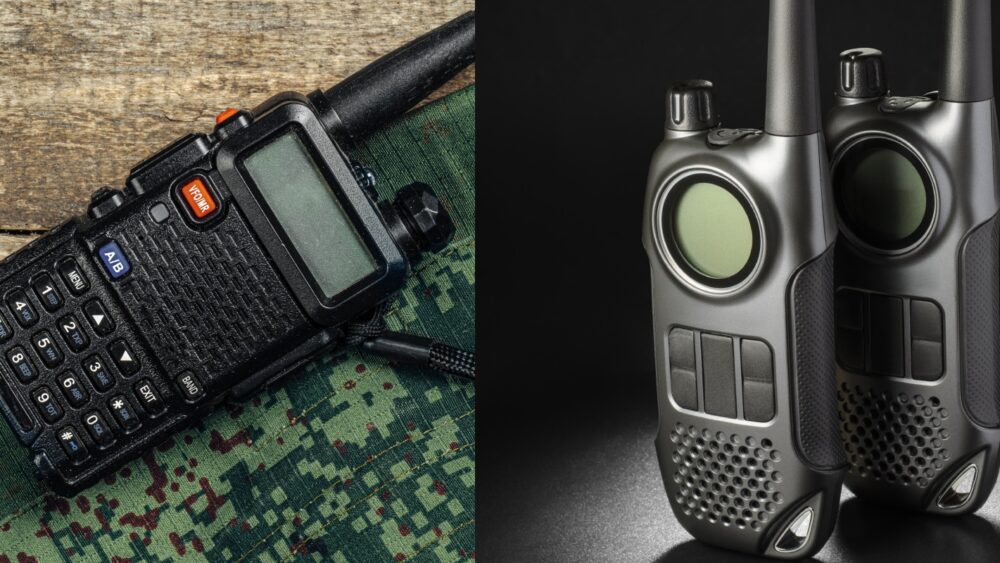
Amateur radios, known as emisoras de radioaficionados, have been a fascinating communication tool for decades, connecting enthusiasts across cities and continents. Whether used for hobby communication, emergency response, or technical experimentation, these radios remain vital for those passionate about radio technology. Over time, technology has evolved, and the world of amateur radio has seen a major transformation — from traditional analog radios to modern digital systems. Understanding the differences between these two types helps radio operators choose the right equipment for their communication needs. Both offer unique advantages, but they function in distinct ways, affecting sound clarity, range, signal processing, and overall user experience.
How Analog Amateur Radios Work
Analog emisoras de radioaficionados rely on continuous radio waves to transmit voice and data. These waves carry information by varying frequency, amplitude, or phase, much like classic FM or AM broadcasts. When speaking into an analog transceiver, your voice is converted into an electrical signal that modulates the radio wave before being sent out.
Analog radios are appreciated for their simplicity. The technology is straightforward, making them easy to operate even for beginners. They also have the advantage of working well in remote areas with limited infrastructure, as analog signals can travel long distances with minimal technical support. However, as distance increases or obstacles interfere, the audio quality gradually degrades. Noise, static, and interference are common, especially in busy radio environments or poor weather conditions.
How Digital Amateur Radios Differ
Digital emisoras de radioaficionados convert voice signals into digital data before transmission. This data is then encoded and transmitted as a series of binary signals — ones and zeros — which are decoded back into voice at the receiver’s end. The result is a cleaner, more consistent audio output with significantly less background noise.
Unlike analog systems, digital radios often include additional features such as GPS tracking, text messaging, and data sharing between users. They can also use repeaters and internet gateways to extend communication range globally. Digital modes like DMR (Digital Mobile Radio), D-STAR, and System Fusion have become popular among amateur radio operators who want clearer audio, more secure communication, and better spectrum efficiency.
The key advantage is stability — digital signals maintain clear sound until they reach their range limit, after which they drop completely. This makes them ideal for modern communication networks, though they require compatible equipment and proper setup to function optimally.
Sound Quality and Signal Clarity
One of the most noticeable differences between analog and digital emisoras de radioaficionados lies in sound quality. Analog signals often produce a “natural” tone, allowing users to hear slight voice variations. However, as signal strength weakens, so does clarity — leading to static, distortion, and occasional dropouts.
Digital systems, on the other hand, provide consistent sound clarity throughout the coverage area. They use audio compression and noise-canceling algorithms to eliminate static and background sounds. This results in crisp communication even when conditions aren’t ideal. For radio operators who value precision and reliability, digital radios often provide a superior experience, especially in professional or emergency response situations.
Coverage and Range Performance
Analog radios typically offer a gradual loss of signal. As operators move farther from the transmitter, the sound fades progressively but often remains understandable. This can be helpful in remote locations where maintaining any level of communication is more important than perfect clarity.
Digital radios operate differently. They maintain strong clarity within range but drop off abruptly once the limit is reached — often described as the “digital cliff.” While this sudden cutoff can be challenging, the benefit is that users enjoy perfect audio right up to the coverage boundary. Digital repeaters and internet-linked systems can also help extend range dramatically, connecting operators across vast regions and even internationally.
Reliability and Power Efficiency
Analog emisoras de radioaficionados are known for their durability and low maintenance. They perform reliably even in rough outdoor conditions and consume less power during transmission, which is useful for battery-operated or field-based communication setups.
Digital radios, though more feature-rich, may use slightly more power due to signal processing and data encoding. However, advancements in battery technology have helped reduce this difference. The reliability of digital systems depends heavily on network infrastructure and compatible repeaters. In areas without digital coverage, analog systems may still offer better performance and flexibility.
Ease of Use and Compatibility
For beginners, analog radios remain an excellent starting point because of their plug-and-play nature. There’s no need for complex programming — just set the frequency, adjust the squelch, and start communicating. They’re compatible with nearly all existing analog repeaters and require minimal technical knowledge.
Digital radios, on the other hand, involve setup steps such as programming talk groups, digital IDs, and channels. This learning curve can initially seem complex, but the added functionality becomes a great advantage over time. Once configured, digital emisoras de radioaficionados offer enhanced control, better organization, and more features for experienced users.
Cost and Accessibility
Analog radios are generally more affordable, making them accessible to hobbyists and new radio operators. The cost of maintenance and accessories is also lower. Digital radios, while more expensive, justify their price through advanced features, better signal handling, and long-term adaptability. For serious radio enthusiasts or emergency response teams, the investment in digital equipment often proves worthwhile due to its superior performance and versatility.
Radio Center – Rivas
Radio Center – Rivas is a trusted destination for enthusiasts looking to explore the world of emisoras de radioaficionados. The store offers a wide range of analog and digital radios, antennas, and communication accessories from top global brands. Whether a customer is an experienced operator or just starting out, the knowledgeable staff at Radio Center – Rivas provides expert guidance to help them find the ideal radio system for their needs. Their commitment to quality and customer satisfaction makes them a preferred choice for anyone passionate about radio communication. With Radio Center – Rivas, every user can stay connected, informed, and ready to communicate effectively across any distance.

